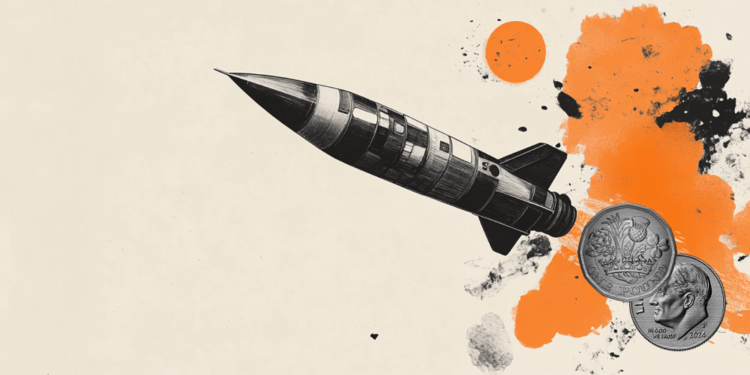- USD/CAD is trading in positive territory for the fifth consecutive day around 1.3500 in early Asian session on Monday.
- Traders are awaiting the US ISM manufacturing PMI for August on Tuesday ahead of US jobs data.
- A rebound in crude oil prices could support the CAD and limit the pair’s upside.
The USD/CAD pair is trading on a stronger note near 1.3500 during the early Asian session on Tuesday. The Dollar Index (DXY), which measures the value of the USD against a basket of six major currencies, consolidated around 101.60 as traders prefer to wait on the sidelines ahead of this week’s key jobs data. On Tuesday, the US ISM manufacturing PMI will be in focus.
The dollar remains on the defensive, marking its biggest monthly drop this year in August on expectations that the US Federal Reserve (Fed) will cut interest rates in September. “The dollar has been under pressure and will remain under pressure for the rest of this year,” said Guy Miller, chief market strategist at Zurich Insurance Group.
The US ISM manufacturing PMI for August, due on Tuesday, is expected to improve to 47.5 in August from 46.8 in July. If the reading shows a better than expected result, this could provide some support to the US Dollar (USD) against the Canadian Dollar (CAD).
Attention will shift to the US non-farm payrolls (NFP) for August on Friday, which are estimated to rise to 165,000 in August from 114,000 in July. This report could provide some clues about the size and pace of the US interest rate cut by the Fed this year.
Meanwhile, concerns over Libyan oil supplies could underpin crude oil prices and benefit the commodity-linked CAD. It is worth noting that Canada is the largest exporter of oil to the United States (US), and higher crude oil prices tend to have a positive impact on the value of the CAD.
Canadian Dollar FAQs
The key factors determining the Canadian dollar (CAD) are the level of interest rates set by the Bank of Canada (BoC), the price of oil, Canada’s main export, the health of its economy, inflation and the trade balance, which is the difference between the value of Canadian exports and its imports. Other factors include market sentiment, i.e. whether investors are betting on riskier assets (risk-on) or looking for safe assets (risk-off), with risk-on being positive for the CAD. As its largest trading partner, the health of the US economy is also a key factor influencing the Canadian dollar.
The Bank of Canada (BoC) exerts significant influence over the Canadian dollar by setting the level of interest rates that banks can lend to each other. This influences the level of interest rates for everyone. The BoC’s main objective is to keep inflation between 1% and 3% by adjusting interest rates up or down. Relatively high interest rates are generally positive for the CAD. The Bank of Canada can also use quantitative easing and tightening to influence credit conditions, with the former being negative for the CAD and the latter being positive for the CAD.
The price of oil is a key factor influencing the value of the Canadian dollar. Oil is Canada’s largest export, so the price of oil tends to have an immediate impact on the value of the CAD. Generally, if the price of oil rises, the CAD rises as well, as aggregate demand for the currency increases. The opposite occurs if the price of oil falls. Higher oil prices also tend to lead to a higher probability of a positive trade balance, which also supports the CAD.
Although inflation has traditionally always been considered a negative factor for a currency, as it reduces the value of money, the opposite has actually occurred in modern times, with the relaxation of cross-border capital controls. Higher inflation typically leads central banks to raise interest rates, which attracts more capital inflows from global investors looking for a lucrative place to store their money. This increases demand for the local currency, which in Canada’s case is the Canadian dollar.
The released macroeconomic data measures the health of the economy and can have an impact on the Canadian Dollar. Indicators such as GDP, manufacturing and services PMIs, employment and consumer confidence surveys can influence the direction of the CAD. A strong economy is good for the Canadian Dollar. Not only does it attract more foreign investment, but it can encourage the Bank of Canada to raise interest rates, which translates into a stronger currency. However, if the economic data is weak, the CAD is likely to fall.
Source: Fx Street
I am Joshua Winder, a senior-level journalist and editor at World Stock Market. I specialize in covering news related to the stock market and economic trends. With more than 8 years of experience in this field, I have become an expert in financial reporting.







